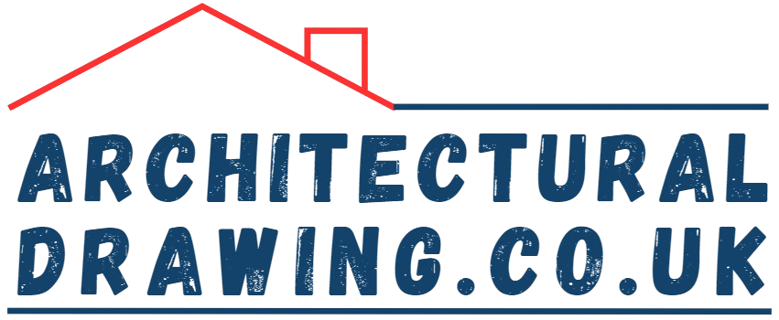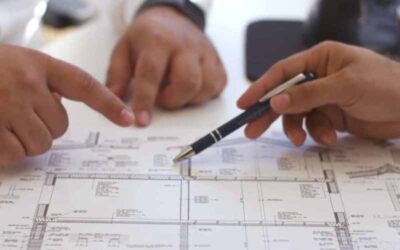When renovating a flat in London, the requirement for structural drawings depends on the nature and extent of the work you’re planning. Let us provide more detail on the key areas where structural drawings are typically required and other related considerations:
1. Structural Alterations
Structural drawings are essential if your renovation involves any work that alters the structural elements of the building. This is not limited to major renovations but can also include smaller changes that affect the load-bearing structure. Examples include:
- Load-bearing walls: If you’re removing or altering a load-bearing wall (common in open-plan layouts), you will need structural drawings. A structural engineer will calculate the load and design appropriate beams or supports.
- Beams and columns: When adding or removing beams or columns, whether for aesthetic purposes or to open up space, you’ll need structural drawings to ensure these new elements support the required load.
- Floor modifications: If you plan to replace or reinforce floors, particularly if you’re adding underfloor heating or making significant modifications (such as installing heavy features like a bathtub in a new location), structural calculations will be needed to ensure the floor’s integrity.
- Loft conversions: If your condo includes access to a loft space and you plan to convert it, structural drawings will be necessary to show how the roof and floor structures will be reinforced to support the additional load.
- Roof alterations: Altering the roof structure to add skylights, dormer windows, or a roof terrace can require structural calculations to ensure the roof maintains its integrity under the new design.
2. Changes Affecting Structural Integrity
If your renovation impacts the building’s stability, even indirectly, you’ll likely need structural drawings. This could include:
- Alterations to foundations: If you’re digging into or altering foundations (such as for an extension or lowering a basement floor), a structural engineer must assess how these changes affect the overall building’s stability.
- External walls: Moving or enlarging windows or doors within external walls is a structural change that needs precise calculations to ensure the wall remains stable. This is especially important for buildings in older parts of London, where many properties have historic or unique structures.
- Internal walls: Even when altering internal walls, if they’re load-bearing, structural drawings are necessary. This applies even to small flats, as removing walls can affect the building’s structure.
3. Building Regulations Compliance
In the UK, all building work must comply with Building Regulations. These regulations ensure safety, energy efficiency, and accessibility in construction projects. Structural drawings are required when submitting a Building Regulations application to your local council. This application is mandatory for any work that affects the structure of the property.
Structural engineers will design the work to comply with the Approved Documents of Building Regulations, specifically:
- Approved Document A (Structure): This covers the structure’s safety, including foundations, walls, floors, and roofs. The drawings should show how any structural changes will maintain the safety and stability of the building.
- Approved Document B (Fire Safety): If your renovation involves major alterations, structural drawings may need to show how the design ensures compliance with fire safety regulations, such as escape routes and the use of fire-resistant materials.
4. Leaseholder/Freeholder Approval
If you’re renovating a flat in London, it’s likely that you don’t own the entire building but are instead a leaseholder. This means the building’s freeholder (or management company) must give consent for any structural changes. Freeholders often request detailed structural drawings to understand the impact of proposed work on the building’s overall structure.
The lease agreement typically outlines what changes are allowed and what requires consent. You’ll also need to inform the freeholder about any structural alterations affecting shared areas, like walls or floors between flats.
5. Planning Permission
Most internal renovations do not require planning permission, as they typically fall under “permitted development.” However, there are exceptions where structural drawings become part of the planning process:
- Listed buildings: If your condo is within a listed building (common in central and historic parts of London), even minor alterations may need planning permission and listed building consent. Structural drawings will be needed to demonstrate that any changes respect the historical integrity of the building.
- Conservation areas: If your condo is in a conservation area, planning permission may be required for external structural changes (like roof terraces or extensions), and structural drawings must accompany your application.
- Major works or extensions: Larger renovations, such as adding an extension, a loft conversion, or substantial structural alterations that affect the building’s footprint or external appearance, will require planning permission, and structural drawings must be submitted with the application.
6. Party Wall Agreement
In London, many flats share walls, floors, or ceilings with neighboring properties. If your renovation impacts these party walls (or shared structures), you may need to enter into a party wall agreement under the Party Wall Act 1996. This applies if:
- You are carrying out work that involves cutting into or away from a party wall.
- You are excavating near neighboring properties, especially if affecting foundations.
A party wall surveyor may request structural drawings to assess the impact of the proposed changes on the neighboring properties.
7. Why Hire a Structural Engineer?
It’s crucial to involve a structural engineer early in the process to assess the scope of the work. A structural engineer will:
- Conduct a survey of the property to identify load-bearing walls and other structural elements.
- Provide detailed structural drawings and calculations, which will be necessary for approval by the local council (building control).
- Ensure compliance with Building Regulations and safety standards.
- Coordinate with other professionals, such as architects and contractors, to ensure that the renovation is executed safely and efficiently.
Conclusion
In summary, structural drawings are needed in London when your condo renovation involves any changes that affect the structure of the building, including alterations to load-bearing walls, floors, roofs, or foundations.
You will also need them for Building Regulations approval, leaseholder consent, and in some cases, planning permission or party wall agreements. Consulting a structural engineer early in the planning process is crucial to ensure your project is safe, legal, and successful.

